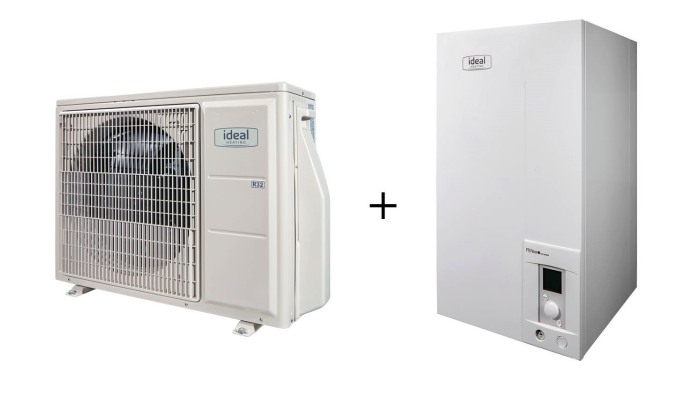In the evolving world of home heating and cooling, energy efficiency and sustainability are more than trends—they are necessities. With rising energy costs and growing environmental concerns, homeowners and property developers are seeking smarter, cleaner, and more cost-effective solutions for climate control. Among the top contenders in this space is the air source heat pump, a technology that’s transforming how we think about heating and cooling buildings.
This comprehensive guide will explore what makes this technology unique, how it works, the benefits it offers, and the key considerations for installing and maintaining one. Whether you’re planning a system upgrade or simply exploring greener alternatives, understanding how an Air Source Heat Pump works is a great place to start.
What Is an Air Source Heat Pump?
An air source heat pump (ASHP) is a type of heating and cooling system that transfers heat between the inside of a building and the outside air. Unlike traditional heating systems that burn fuel to generate warmth, an air source heat pump captures heat from the air—even in cold weather—and moves it indoors. In summer, it reverses this process to cool the home.
This system is built around the refrigeration cycle, using a compressor and refrigerant to absorb and move heat. It includes both indoor and outdoor units and can operate effectively in a wide range of climates with minimal environmental impact.
Key Components:
- Outdoor Unit: Contains the coil and fan to absorb and release heat.
- Indoor Unit: Distributes heated or cooled air throughout the space.
- Refrigerant: Circulates between units to transport heat.
- Compressor: Powers the refrigeration cycle.
- Reversing Valve: Enables switching between heating and cooling modes.
How It Works: The Science of Heat Transfer
At its core, the air source heat pump relies on the basic principle that heat can be moved from one place to another using refrigerant. During the heating cycle, the system pulls heat from the outdoor air—even in winter—and transfers it inside. In cooling mode, it does the opposite, acting much like a traditional air conditioner.
Heating Mode:
- The outdoor coil absorbs heat from the air.
- The refrigerant evaporates, capturing the heat and carrying it to the compressor.
- The compressor increases the refrigerant’s pressure and temperature.
- The heated refrigerant moves to the indoor coil, releasing warmth into the living space.
- The cycle repeats.
Cooling Mode:
- The reversing valve switches direction.
- The indoor coil absorbs indoor heat, and the system transfers it outside.
- The outdoor coil releases the heat into the air.
- The process removes indoor heat and lowers room temperature.
This cycle makes air source systems extremely energy-efficient, as they move heat rather than create it.
Why Choose an Air Source Heat Pump?
There are several compelling reasons to consider this system for your heating and cooling needs. From cost savings to environmental responsibility, an air source heat pump provides numerous advantages over conventional HVAC systems.
1. Energy Efficiency
Air source systems can deliver 3 to 4 times more heat energy than they consume in electricity. This coefficient of performance (COP) makes them one of the most efficient HVAC technologies available today.
2. Lower Operating Costs
Because they use electricity to move heat instead of generating it, these systems can significantly reduce energy bills over time—especially when replacing electric resistance or oil-based heating.
3. Environmental Impact
They produce fewer greenhouse gas emissions than fossil fuel systems and can be powered by renewable electricity sources like solar or wind. Choosing this system contributes to a cleaner, more sustainable future.
4. Dual Functionality
These units serve both heating and cooling functions, eliminating the need for separate systems and simplifying maintenance and control.
5. Quiet Operation
Modern designs include variable-speed fans and sound-dampening technology, making them significantly quieter than older systems or combustion-based units.
Is It Right for Your Property?
While an Air Source Heat Pump is a strong choice for many buildings, it’s important to evaluate your property and climate to determine if it’s the best solution.
Consider the Following:
- Climate: These systems are most efficient in moderate to cool climates, but recent advancements have made cold-climate models highly capable even in below-freezing temperatures.
- Insulation: Homes with good insulation and sealed windows benefit most, as the system doesn’t have to work as hard to maintain temperature.
- Ductwork: Existing ducts can be used, or you can opt for ductless mini-split versions ideal for homes without existing duct infrastructure.
- Space: Outdoor and indoor units require space for proper installation and airflow.
If your home meets these conditions, an air source system could provide both short-term comfort and long-term savings.
The Installation Process: What to Expect
Proper installation is key to maximizing the performance and lifespan of your new system. A professional HVAC technician will follow a series of steps to ensure safe and efficient setup.
Step 1: Property Assessment
A site visit is conducted to determine the most appropriate system size, placement, and ductwork or distribution needs.
Step 2: System Selection
Based on the assessment, a suitable model is chosen, taking into account energy efficiency ratings, capacity, and optional features like smart thermostats or zoning.
Step 3: Installation of Units
Outdoor and indoor units are installed with attention to airflow, drainage, and electrical connections. Ducts may be modified or added, if required.
Step 4: Refrigerant Charging and Testing
Refrigerant lines are connected and sealed. The system is charged, tested, and inspected for performance, refrigerant leaks, and airflow accuracy.
Step 5: Owner Orientation
The technician walks the homeowner through controls, maintenance tips, and warranty information.
Maintenance and Longevity
One of the advantages of an air source system is its relatively low maintenance requirements. That said, consistent care is still needed to maintain efficiency and avoid costly repairs.
Routine Maintenance Includes:
- Changing or cleaning air filters monthly
- Clearing debris from the outdoor unit
- Inspecting refrigerant lines for leaks
- Cleaning coils annually
- Scheduling professional inspections twice a year
With proper care, a well-installed system can last 15 to 20 years or more, delivering consistent comfort and efficiency throughout its lifespan.
Financial Incentives and Savings
Thanks to their environmental benefits, many governments and utility companies offer rebates and incentives for installing an Air Source Heat Pump. These financial incentives can significantly reduce the upfront cost of installation.
Potential Savings Sources:
- Federal and state energy-efficiency tax credits
- Utility company rebate programs
- Low-interest loans for green upgrades
- Renewable energy grants or subsidies
Before purchasing a system, check local programs to see what financial support you may be eligible for.
Smart Integrations and Technological Advancements
Today’s systems are more advanced than ever, with features that enhance usability, performance, and customization.
Examples Include:
- Smart Thermostats: Allow remote control, learning algorithms, and scheduling.
- Variable-Speed Compressors: Adjust system output for energy savings and consistent temperature.
- Zoning Systems: Heat or cool specific areas independently for better comfort control.
- Mobile App Monitoring: View system performance and get alerts for maintenance needs.
These smart upgrades make managing your comfort more convenient and efficient than ever before.
Conclusion
Whether you’re building a new home, upgrading an aging system, or seeking to lower your carbon footprint, integrating an Air Source Heat Pump is a forward-thinking move. Offering unmatched energy efficiency, reliable year-round performance, and lower operational costs, it stands as a leading solution in modern climate control.
As the global demand for sustainable living continues to rise, systems that offer both environmental benefits and economic advantages are no longer optional—they’re essential. With proper installation, routine maintenance, and a smart integration strategy, this technology delivers long-term comfort, convenience, and peace of mind.



